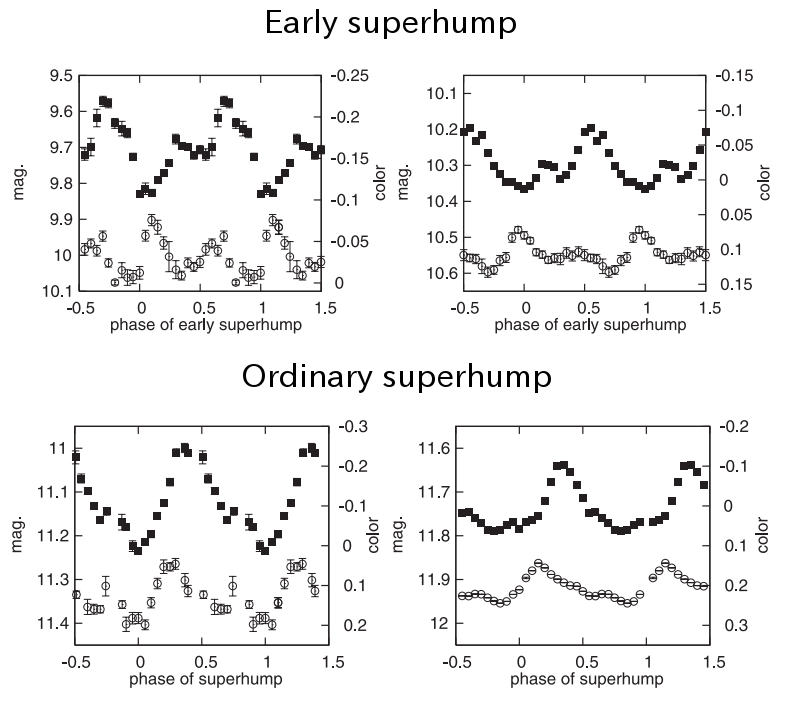Optical and Near-Infrared Photometric Observation during the Superoutburst of the WZ Sge-Type Dwarf Nova, V455 Andromedae

R. Matsui, M. Uemura, A. Arai, M. Sasada, T. Ohsugi, et al., “Optical and Near-Infrared Photometric Observation during the Superoutburst of the WZ Sge-Type Dwarf Nova, V455 Andromedae,” PASJ, vol. 61, p. 1081, 2009.
We report on optical and infrared photometric observations of a WZ Sge-type dwarf nova, V455 And during a superoutburst in 2007. These observations were performed with the KANATA (V, J, and Ks bands) and MITSuME (g’, RC, and IC bands) telescopes. Our 6-band simultaneous observations allowed us to investigate the temporal variation of the temperature and the size of the emitting region associated with the superoutburst and short-term modulations, such as early and ordinary superhumps. A hot (>11000 K) accretion disk suddenly disappeared when the superoutburst finished, while blackbody emission, probably from the disk, still remained dominant in the optical region with a moderately high temperature (˜8000 K). This indicates that a substantial amount of gas was stored in the disk even after the outburst. This remnant matter may be a sign of an expected mass-reservoir, which can trigger echo outbursts observed in several WZ Sge stars. The color variation associated with superhumps indicates that viscous heating in a superhump source stopped on the way to the superhump maximum, and a subsequent expansion of a low-temperature region made the maximum. The color variation of early superhumps was totally different from that of superhumps: the object was bluest at the early superhump minimum. The temperature of the early superhump light source was lower than that of an underlying component, indicating that the early superhump light source was a vertically expanded low-temperature region at the outermost part of the disk.
